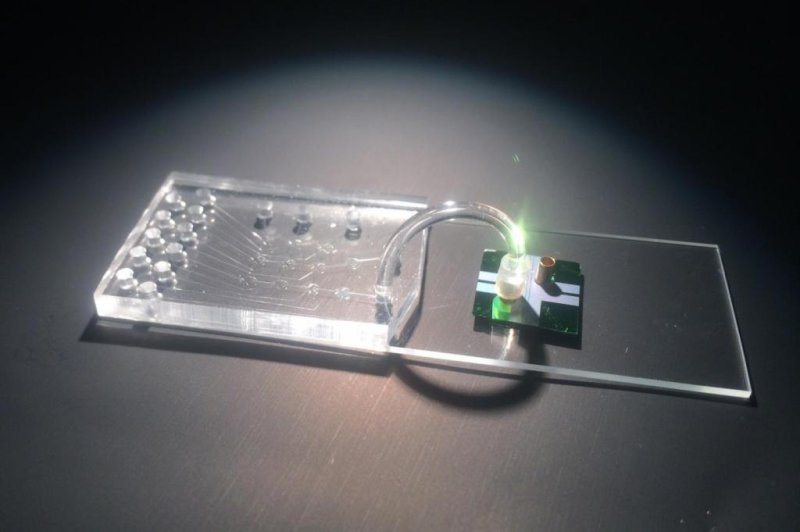The device integrates a microfluidic chip for sample preparation and an optofluidic chip for optical detection of individual molecules of viral RNA, such as Ebola. Photo by Joshua Parks/UC Santa Cruz
SANTA CRUZ, Calif., Sept. 25 (UPI) -- Researchers have developed a chip-based technology that can accurately detect Ebola, and is expected to help test and diagnose the virus quickly in outbreak situations.
Ebola is generally detected using polymerase chain reaction, or PCR, which amplifies the virus's genetic material so it can be detected. The method, however, can be time-consuming because it requires that samples be sent back to a lab for testing.
"Compared to our system, PCR detection is more complex and requires a laboratory setting," said Dr. Holger Schmidt, professor of optoelectronics at the University of California Santa Cruz, in a press release. "We're detecting the nucleic acids directly, and we achieve a comparable limit of detection to PCR and excellent specificity."
The new testing system contains two chips, a microfluidic chip to prepare samples and octofluidic chip that performs optical detection on the samples. The microfluidic chip isolates Ebola virus RNA by binding to a matching sequence of synthetic DNA, which are pulled from nontargeted molecules in the sample and sent to the octofluidic chip for optical detection.
In lab tests of the system, researchers saw positive detection of Ebola while the system did not misidentify samples containing the Sudan or Marburg viruses, which are related to Ebola. The researchers also tested samples with different levels of Ebola and found the system correctly identified how much of the virus was present over six orders of magnitude.
"The massive outbreak of highly lethal Ebola hemorrhagic fever in West Africa illustrates the urgent need for diagnostic instruments that can identify and quantify infections rapidly, accurately, and with low complexity," researchers wrote in the study, published in Nature: Scientific Reports.
In addition to plans for using the technology to test raw blood samples, researchers said they are working on adapting the system to detect other pathogens.















